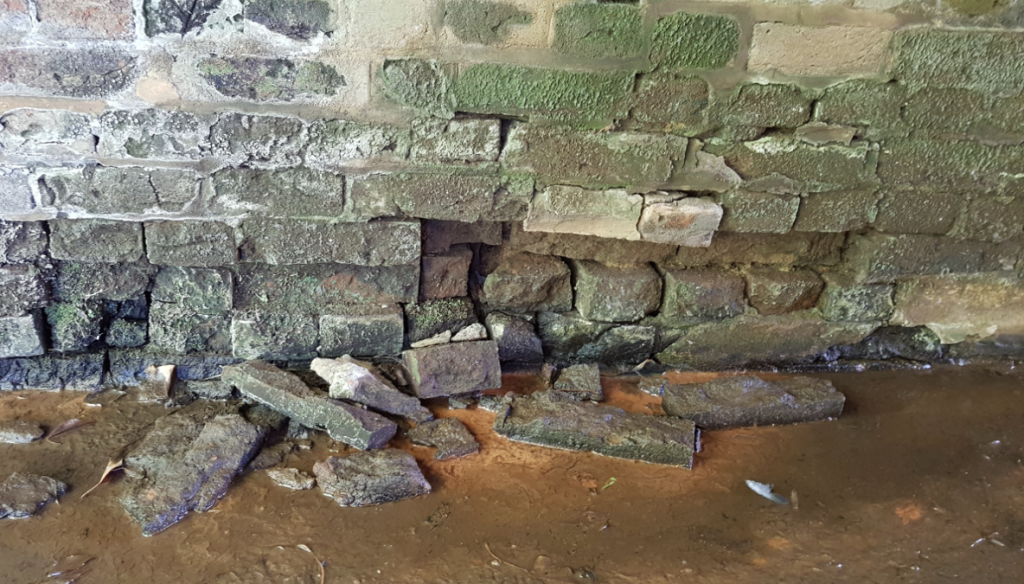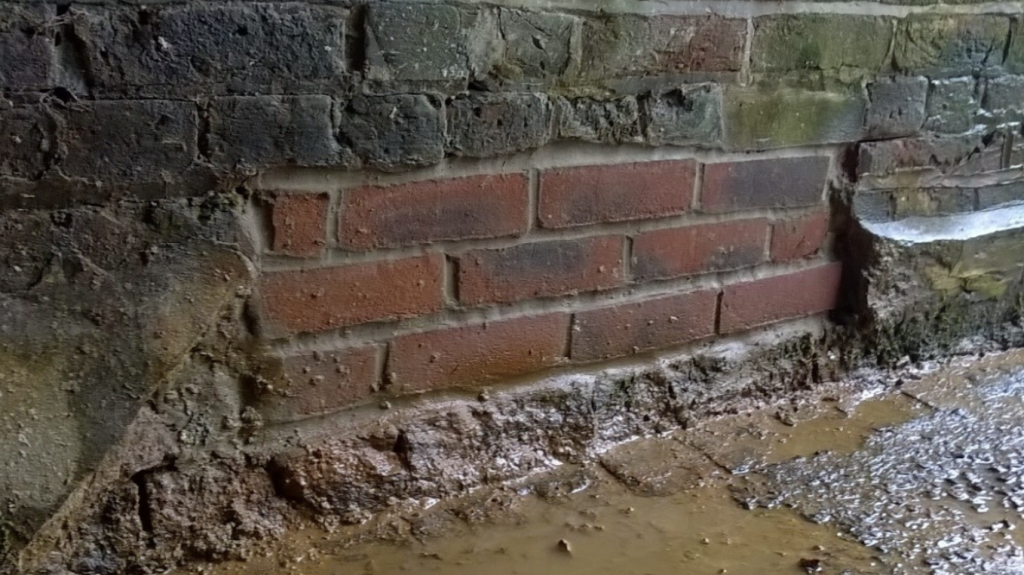Spalling bricks
Over the years Triangle have come across many examples of spalling in brickwork. Spalling is caused by numerous factors, so let’s take a look at them.
What is it, what causes it and how to spot it
Spalling brickwork is a result of numerous conditions or factors, however the most common cause is water. The main reason is water adds an element of corrosion to the masonry material as well as the bricks themselves. Water that has seeped into the brickwork can also freeze (expand) and thaw (retract) repeatedly, causing fractures in the structure. This usually occurs in homes with poor drainage and poor damp proofing, and under bridges or on sea walls.
Rainwater (especially with English weather), pounding brickwork repeatedly can eventually cause erosion and spalling. Improper drainage allows overspill of rainwater into areas like chimneys or exposed walls. This can also seep up from the ground if the wrong type of damp proofing has been used, causing rising damp.
Spotting spalling is important, because early treatment avoids costly repairs. Look for signs of cracks in the mortar or the bricks. Once bricks have started to come loose, or fall out, then you will need to get the structural soundness of the wall checked. Spalling can be dangerous and once it has happened in one place it is likely to spread unless it is treated.

Other factors that can cause spalling are:
-
- Improper bricks used- if the grade of brick is incorrect for the place it is being used then spalling is much more likely to occur.
- High pressure washing – if done repeatedly, can cause real damage.
- Using impermeable sealants – Bricks are made in a way that allows them to soak in a certain amount of moisture, but also release it. This process is important, but by sealing it with a non-breathable sealant you are reducing the bricks efficiency to do this, and water often gets inside but cannot escape. To find out more about brickwork sealants check out this interesting article.
So now you know what it is- how can you fix it?
One of the most important things to do is to contact a professional. Identifying how much of the brick is damaged will tell if the structural integrity of the wall in compromised and how much repair is needed. Often the wall can be repaired in sections, with smaller financial costs.
Always seek to use a company with experience in spalling brickwork repairs.

Is there any way to prevent spalling?
Brickwork that has been repaired from spalling will need attention to the cause, such as bad drainage, damp protection, and non-breathable sealant.
Sometimes spalling brickwork is inevitable, due to the location of the bricks and its contact with water. Making checks on brickwork often will enable any repairs to be acted upon quickly, saving time and money.
To speak to Triangle about spalling repairs, or to seek further information, contact us today.
